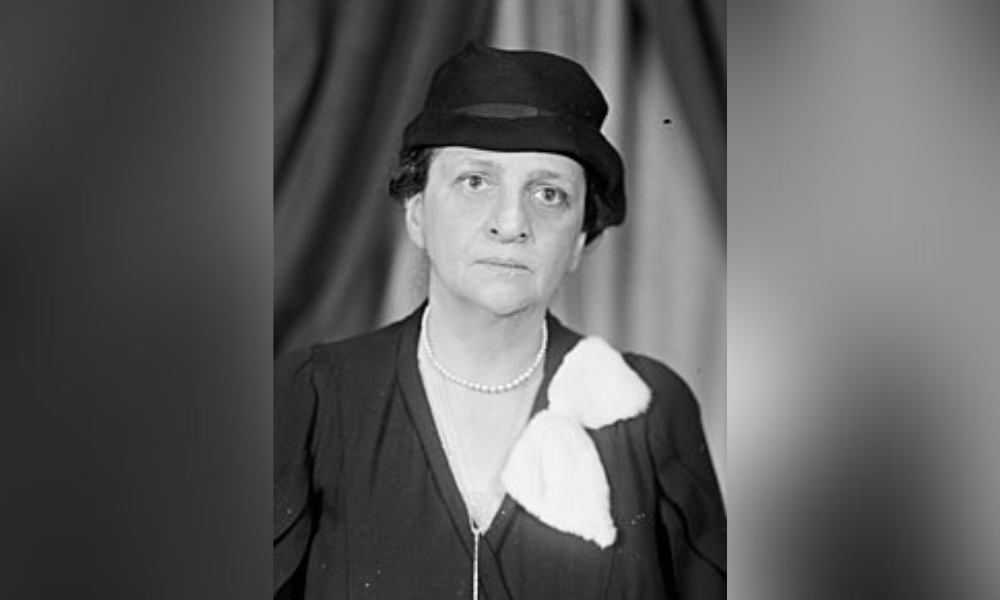How Francis Perkins became the first woman appointed to a presidential cabinet


In a recent blog, I wrote about one of the unsung heroes in early workplace safety. A woman named Crystal Eastman. Unfortunately, she is lost in the mists of time as her achievements were far from ordinary.
I thought I might introduce another contemporary of Crystal Eastman’s, Francis Perkins. Yes, yet another remarkable woman. Not surprising since there was so much change in the early twentieth century in the United States, much of it driven by women. Like Crystal Eastman, she was a strong supporter of women’s suffrage.
Where Crystal Eastman got involved in the Pittsburgh Survey completed by the Russell Sage Foundation from 1907 to 1908 with the volumes published 1908-1914, Francis Perkins witnessed the Triangle Shirtwaist Factory fire in New York City in March 1911.
In 1910 France was appointed as the Executive Secretary of the New York City Consumers League. The league was involved in investigating working conditions in businesses, including factories. They also lobbied for the elimination of child labor and a shorter workweek.
Saturday, March 25, 1911, was a bright Saturday afternoon, and many New Yorkers were out for a walk to take advantage of the good weather. At the Triangle Shirtwaist (A shirtwaist is the upper bodice of a woman’s dress) Factory, the predominately female workforce was hard at work. The factory occupied the top three floors of a ten-story building.
A fire started and quickly spread through the ninth floor. Workers on the eighth and tenth floors could escape. The fire doors were locked on the ninth floor, and the elevator malfunctioned. Forty women jumped or dropped to their death on the pavement below. Over a hundred died in the building.
This event was the catalyst for health and safety practitioners in the workplace, and a subsequent meeting of investigators led to the formation of the American Society of Safety Professionals (ASSP).
It also led to the creation of the Factory Investigating Commission, but there is more to that story. Francis Perkins was no stranger to the working conditions of the time. She was having tea when she and her friends heard a commotion outside. Fire trucks were passing by, and when they followed, she was confronted by the sight of a ten-story building ablaze. Women clung to windows before dropping to their deaths. The fire department did not have ladders that would reach the higher floors of the building.
Francis Perkins was so affected by what she saw that day that she became one of the Factory Investigating Commission’s chief investigators as they conducted investigations in 3,385 workplaces, interviewed 472 witnesses, and held 59 public hearings. Francis took the commissioners on field trips to see the working conditions firsthand. The Factory Investigating Commission’s work was the largest such study ever done and certainly larger than the Pittsburgh Survey since it concerned an entire state.
The testimony and evidence filled over 7,000 pages and led to sweeping legislative reforms. Thirty-six of the recommendations were enacted into law, and the work of the Commission started a chain of labor reforms across the United States.
Francis continued her pioneering work in workplace safety, and in 1912, after years of lobbying, saw legislation passed limiting women to a fifty-four-hour workweek.
She impressed Al Smith, the vice-chair of the Factory Investigation Committee, and an assemblyman at the time. He appointed her to the New York State Industrial Commission in 1919. When he became Governor in 1923, he appointed her to the Industrial Board.
Francis became chair of the New York Industrial Board in 1926 and led the board, setting precedents that were soon followed by other states.
When Smith ran for president, Francis helped with the campaign and met a young Franklin Delano Roosevelt. When Roosevelt became Governor of New York, he appointed her New York’s Industrial Commissioner – the top job in the state department of labor.
When FDR won the presidency, he appointed her Secretary of Labor in 1933. She was the first female ever appointed to a cabinet post. That led to her being featured on the cover of Time magazine in August 1933.
She helped create the Bureau of Labor Standards in 1933. Today it has a different name – the Occupational Safety and Health Administration (OSHA). The administrator was a woman named Clara Mortenson Beyer, another pioneer. She would remain with the bureau, and OSHA, in a senior capacity until 1958.
Francis held her post until FDR’s death in 1945. During her tenure, she continued her tireless work for better workplaces and legislation. She helped craft FDR’s new deal to lift America out of the great depression. Francis Perkins chaired the committee that drafted the Social Security Act in 1935. This sweeping legislation was not just social security as Americans know it today. It included worker’s compensation, unemployment insurance, and national health care, along with old age pensions. This directly assisted the people over 65 who had the largest poverty rate in the country at the time.
In 1938 Francis Perkins helped draft the Fair Labor Standards Act. The act outlawed child labor – a cause she had long fought for. It established a federal minimum wage and a system for overtime. The act also gave us the 40-hour work week and the eight-hour work day.
Francis Perkins lobbied and worked tirelessly for workplace safety, and her efforts were more than national in scope. It was not easy. The Social Security Act was challenged in the Supreme Court. It was a radical approach for the time, as were the efforts to improve workplace safety that employers simply saw as an added cost. The Supreme Court upheld the legislation in 1937.
Although many have not heard of Francis Perkins. OSHA gives her credit for the legislation that enabled the agency and the creation of its predecessor. Many powerful women in US politics have highlighted her accomplishments.
Francis Perkins was a truly extraordinary person who helped craft the workplace and workplace health and safety as we know it today.





